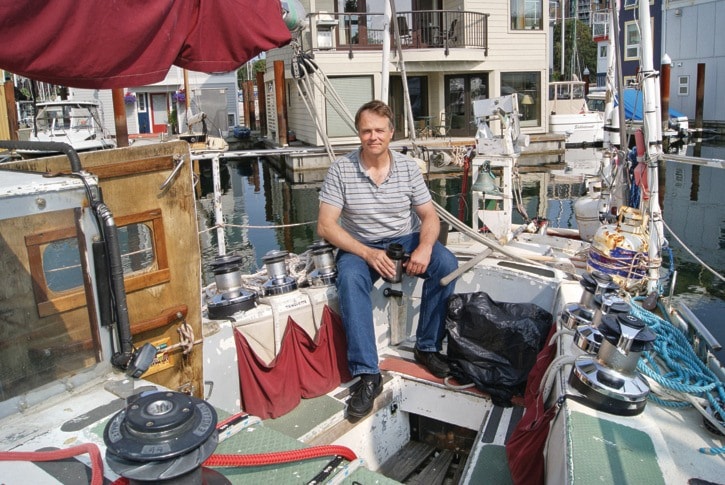Richard Hudson sweeps his finger across a world map affixed to his tabletop and offers a quiet overview of the some-80,000 kilometres he sailed from France to Argentina to Canada and most recently, through the Northwest passage.
After four attempts, the computer systems administrator from Toronto became one of the small but growing number of mariners who have successfully navigated through the nearly 1,600 kilometre arctic archipelago.
“I was wondering if I could finally make it,” says Hudson, who arrived in Victoria this summer on his 15-metre sailboat, Issuma, after completing the passage in 2011 and wintering in Alaska.
“When there are some clouds, so it’s not shining horribly brightly, and when the wind is not very strong … when the waves aren’t very big, so you’re not worried about being blown out onto a rock – that’s a beautiful day on the water.”
According to Tony Soper, British author and arctic expedition leader who tracks traffic through the passage, Issuma is the 151st boat through the Northwest passage.
At roughly one-third less distance to Asia than via the Panama Canal, the passage has long been a desired route for shipping between Europe and Asia.
Before the year 2000, only a small number of icebreaker ships had been through the passage, but with climate change opening up the channel for a longer period of each summer, the number of pleasure craft in the passage is on the rise, along with commercial vessels.
The Northern Canada Vessel Traffic Services Zone, or NORDREG, tracked 13 pleasure craft through the Northwest passage in 2011. In both 2009 and 2010, 11 small vessels made the trip and in 2008, NORDREG counted just six. Vessels under 300 gross tons, such as Issuma, aren’t required to file a trip plan and aren’t counted.
Hudson spent the majority of the 13-month trip with two other crew members before wintering for six months in Alaska, and, eventually landing at West Bay Marina in Esquimalt.
Designed for the icy waters of Antarctica, Issuma features a steel keel capable of being hoisted from the water and a curved hull designed to allow the vessel to pop up rather than be crushed by ice.
Alison Proctor of the University of Victoria’s ocean technology lab returned to the arctic this week to continue work with the Bluefin-12 automated underwater vehicle.
Last August, Proctor and a team from UVic travelled to Nunavut’s King William Island in search of Sir John Franklin’s ships HMS Terror and HMS Erebus, on which he and 128 men set sail in 1845 in hopes of making it through the passage. They disappeared after 18 months at sea.
“It must have been amazingly challenging to even consider doing it,” Proctor says of those early explorations. “It’s a harsh environment, very desolate.”
The Bluefin’s expedition went as planned for crew members. The experience isn’t comparable to that of mariners on smaller vessels in the passage, Proctor notes.
“There’s a lot of room between (vessels). You can go a long time without seeing anyone and without seeing anyone that can help you if you get into trouble,” she says of sailing the Northwest passage.
From a cabin still stuffed with spare parts, navigational instruments and a few comforts of home, Hudson sips a coffee and doles out advice for the growing number of adventurers likely to attempt the passage when it opens up later this month. Spend as much time as possible on the water, he says, and as the boy scouts say: be prepared.
“The charts vary widely in how accurate they are in certain areas and it’s sometimes not easy to get weather forecasts,” he says. “You have to be very self-sufficient.”
nnorth@saanichnews.com
